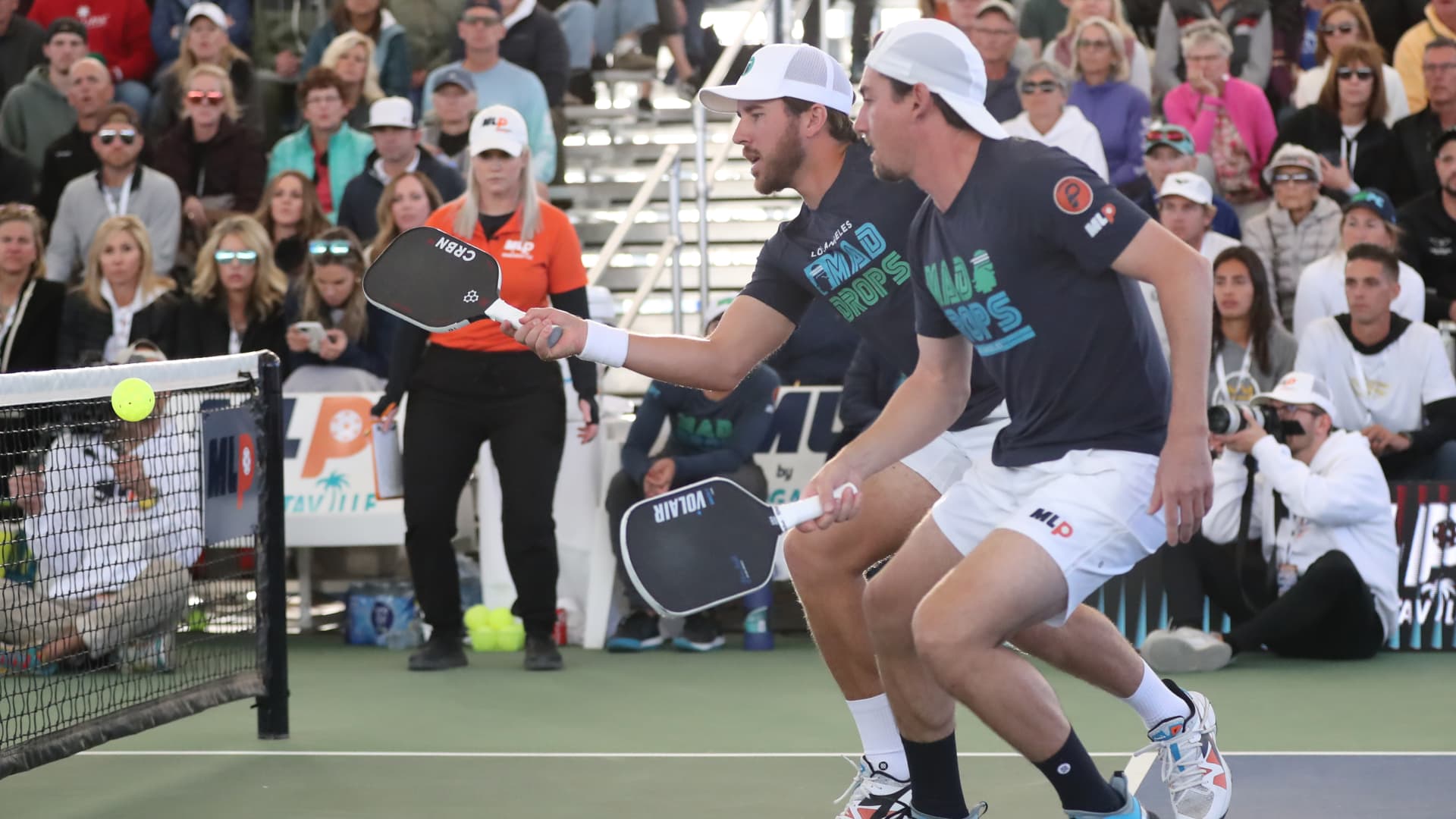Pickleball’s Major League Players Offered 40% Pay Cuts
The rapid growth of pickleball, a popular paddle sport, may be hitting a speed bump as Major League Pickleball (MLP) is seeking player consent for a 40% reduction in compensation in exchange for lighter workloads.
According to an email obtained CNBC, the league is asking players to agree to a decrease in annual work days from 200 to 120, which would result in a proportional salary cut. The email emphasizes the need for economic changes to ensure a sustainable and thriving business in the future.
Players who consent to the proposal will receive a minimum of 10 slots in PPA events, as well as the freedom to monetize the additional 245 days of the year with 100% of the earnings going to them.
Additionally, MLP plans to reduce operational and event-related costs for 2024 and has parted ways with Commissioner Brooks Wiley. The email also revealed that the league’s founder, Steve Kuhn, resigned in October.
News of the pay reductions was initially reported the Dink Pickleball, and both MLP and PPA declined to comment on the matter.
The proposed compensation cuts come at a time when professional pickleball is experiencing significant growth and while MLP and the Professional Pickleball Association (PPA) are working towards a merger.
Despite the challenges faced professional pickleball, reactions among players have been mixed. While some have expressed concerns about potential issues related to collective bargaining and anti-trust, others believe that the proposed adjustments are fair.
Two-time MLP champion Thomas Wilson stated that the players are being paid “more than fairly, even with the cuts,” while Laura Vossberg Gainor, a pickleball marketing agency founder, remains optimistic about the sport’s future amid its rapid growth and increasing off-court brand endorsement opportunities for players.
As the pickleball community continues to navigate through the evolving landscape of professional play, the outcome of these proposed changes will shape the sport’s future and the dynamics between players, leagues, and stakeholders.

